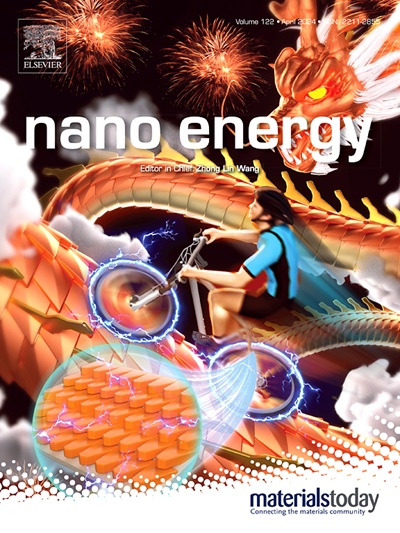Molecularly Crowding Electrolytes and Tailored Electrodes for High-performance Aqueous Mn-Ion Hybrid Micro-supercapacitors
IF 16.8
1区 材料科学
Q1 CHEMISTRY, PHYSICAL
引用次数: 0
Abstract
Aqueous Mn−ion hybrid micro−supercapacitors (AMIHMSCs) are promising systems, which can greatly improve the energy density and power density of traditional aqueous micro supercapacitors. Unfortunately, the development of AMIHMSCs has been challenging due to the low redox potential and high chemical activity of Mn metal, as well as the low capacity and poor cycle life of electrode material resulting from Mn2+ with high charge density and large solvated ion radius. Herein, we report the first generation AMIHMSCs assembled with molecular crowding electrolytes, hydroxylated Ti3C2Tx MXene (H−Ti3C2 MXene) anode and AlxV2O5 with dimethyl formamide molecules intercalation (AlVO−DMF) cathode. Benefiting from the wide electrochemical stability window and unique Mn2+ solvation structure in molecular crowding electrolytes, excellent capacitance of H−Ti3C2 MXene and enhanced structural stability of AlVO−DMF, the AMIHMSCs exhibit high energy density, power density and long cycle life. This work provides a pathway for designing high−performance AMIHMSCs.

高性能mn -离子混合微型超级电容器的分子拥挤电解质和定制电极
水性锰离子混合微超级电容器(AMIHMSCs)是一种很有前途的系统,它可以大大提高传统水性微超级电容器的能量密度和功率密度。不幸的是,由于Mn金属的低氧化还原电位和高化学活性,以及Mn2+具有高电荷密度和大溶剂化离子半径导致电极材料的低容量和低循环寿命,AMIHMSCs的开发一直具有挑战性。在此,我们报道了第一代AMIHMSCs由分子拥挤电解质、羟基化Ti3C2Tx MXene (H - Ti3C2 MXene)阳极和二甲基甲酰胺分子插层AlxV2O5 (AlVO - DMF)阴极组装而成。得益于分子拥挤电解质中广泛的电化学稳定窗口和独特的Mn2+溶剂化结构,H - Ti3C2 MXene优异的电容和AlVO - DMF增强的结构稳定性,AMIHMSCs具有高能量密度、功率密度和长循环寿命。这项工作为设计高性能的AMIHMSCs提供了一条途径。
本文章由计算机程序翻译,如有差异,请以英文原文为准。
求助全文
约1分钟内获得全文
求助全文
来源期刊

Nano Energy
CHEMISTRY, PHYSICAL-NANOSCIENCE & NANOTECHNOLOGY
CiteScore
30.30
自引率
7.40%
发文量
1207
审稿时长
23 days
期刊介绍:
Nano Energy is a multidisciplinary, rapid-publication forum of original peer-reviewed contributions on the science and engineering of nanomaterials and nanodevices used in all forms of energy harvesting, conversion, storage, utilization and policy. Through its mixture of articles, reviews, communications, research news, and information on key developments, Nano Energy provides a comprehensive coverage of this exciting and dynamic field which joins nanoscience and nanotechnology with energy science. The journal is relevant to all those who are interested in nanomaterials solutions to the energy problem.
Nano Energy publishes original experimental and theoretical research on all aspects of energy-related research which utilizes nanomaterials and nanotechnology. Manuscripts of four types are considered: review articles which inform readers of the latest research and advances in energy science; rapid communications which feature exciting research breakthroughs in the field; full-length articles which report comprehensive research developments; and news and opinions which comment on topical issues or express views on the developments in related fields.
 求助内容:
求助内容: 应助结果提醒方式:
应助结果提醒方式:


